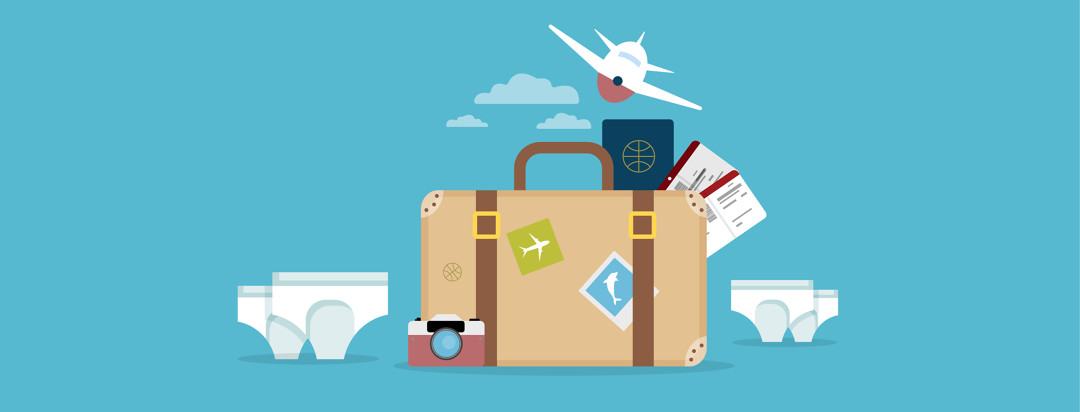Be Prepared: Planning Protection for Exercise and Travel
My goal after surgery in April 2018 was to get back to normal exercise and travel as soon as possible. That meant experimentation with what kind of incontinence protection I would need for different levels of activity and distances traveled.
Accommodating any leakage
At first I had to accept that heavy leakage requiring full Depends briefs limited what I could do and where I could go. Walking was my most rigorous exercise for a while and travel was within a hundred miles or so. I always carried back up briefs and baby wipes for staying as fresh as possible if I had to change in a public rest room or on a trail somewhere.
As my degree of incontinence began to improve, and I moved to maximum absorbency pads, I was able to feel more comfortable extending my range, especially hiking and rock climbing, one of my other favorite activities. I miscalculated a couple of times and leaked through my protection, not a pleasant experience, but I learned to err on the side of caution and change before a problem occurred. Even now, prolonged walking, especially downhill, weakens my pelvic floor and increases leakage. Walking a golf course also requires protection. I usually have to change after nine holes.
My first overnight hiking trip postop
My first extended overnight trip was in September when my wife and I spent four days day hiking in the Eastern Sierra. By then I had changed from pads to lightweight shields. I found I could hike a few miles safely with just a shield, but after that I was better off wearing a pad. It’s important to stay hydrated, but once the muscles have fatigued the leakage is fairly constant, which I found out big time on the return six mile downhill hike from Bishop Pass. Again, I had what I needed in my pack. It’s inconvenient changing in the middle of the woods, but I’d rather deal with the inconvenience than stay out of the woods!
Traveling to Kauai
In January my wife and I spent eight days on Kauai, the Garden Isle, our first real vacation since my surgery. I packed two shields for each day, even though in the last couple of months I’ve been able to spend longer lengths of time with no shield at all, a huge relief after so many months wearing protection during all my waking hours (none required while sleeping after the first few weeks).
I decided I would use the vacation to find out how long I could go each day with no protection, and the results were very good. I wore shields on a couple of hikes, but otherwise enjoyed prolonged freedom for the first time in nine months. Time, natural healing and kegeling are combining to slowly get me back to something like normal.
Finding my point of comfort
Since returning from our vacation, I spend most of my day with no protection, the exception being when I walk my dog in the afternoon. By then fatigue has set in and I will leak. A shield is all I need. On a recent seven mile hike on hilly terrain I had to change my shield once. Rock climbing is very strenuous, so depending on how long the approach hike is, I will wear either a pad or a shield. I also don’t kegel on the mornings when I know I’m going to be engaged in hiking or climbing so as not to fatigue my muscles prior to the exercise. That was something I learned from my physical therapist.
Through trial and error, success and failure, I’ve reached a point of comfort when it comes to protecting myself while traveling or exercising. I’m grateful that I can be protection free when I’m more or less sedentary, which includes driving and flying, as long as I have access to a bathroom. Protection technology is very good, but confidently going without protection is a blessing. And all signs point to even better times ahead. Hope for the best, but be prepared for something less. And most important of all, live without fear!

Join the conversation